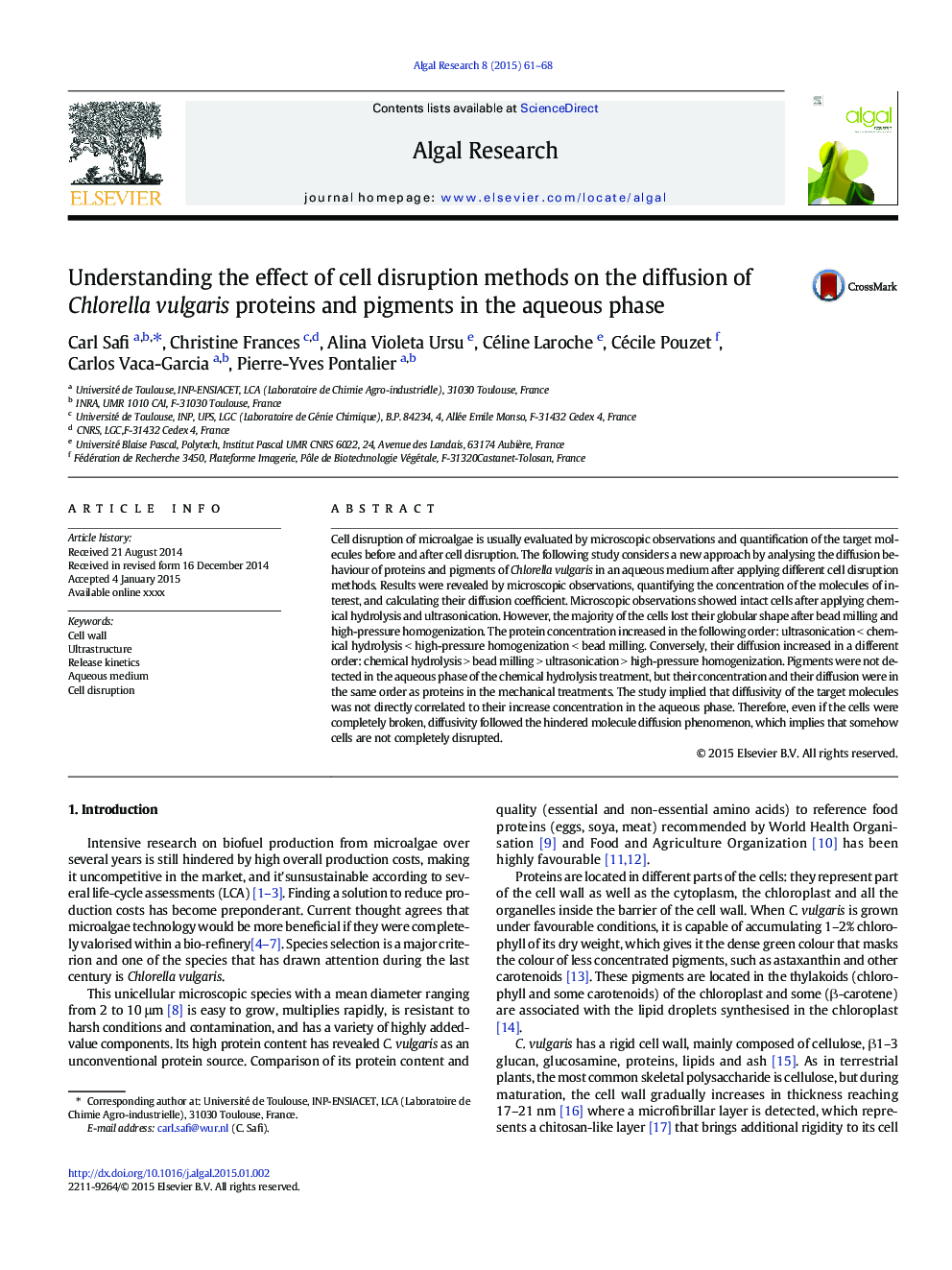| Article ID | Journal | Published Year | Pages | File Type |
|---|---|---|---|---|
| 8088323 | Algal Research | 2015 | 8 Pages |
Abstract
Cell disruption of microalgae is usually evaluated by microscopic observations and quantification of the target molecules before and after cell disruption. The following study considers a new approach by analysing the diffusion behaviour of proteins and pigments of Chlorella vulgaris in an aqueous medium after applying different cell disruption methods. Results were revealed by microscopic observations, quantifying the concentration of the molecules of interest, and calculating their diffusion coefficient. Microscopic observations showed intact cells after applying chemical hydrolysis and ultrasonication. However, the majority of the cells lost their globular shape after bead milling and high-pressure homogenization. The protein concentration increased in the following order: ultrasonication < chemical hydrolysis < high-pressure homogenization < bead milling. Conversely, their diffusion increased in a different order: chemical hydrolysis > bead milling > ultrasonication > high-pressure homogenization. Pigments were not detected in the aqueous phase of the chemical hydrolysis treatment, but their concentration and their diffusion were in the same order as proteins in the mechanical treatments. The study implied that diffusivity of the target molecules was not directly correlated to their increase concentration in the aqueous phase. Therefore, even if the cells were completely broken, diffusivity followed the hindered molecule diffusion phenomenon, which implies that somehow cells are not completely disrupted.
Related Topics
Physical Sciences and Engineering
Energy
Renewable Energy, Sustainability and the Environment
Authors
Carl Safi, Christine Frances, Alina Violeta Ursu, Céline Laroche, Cécile Pouzet, Carlos Vaca-Garcia, Pierre-Yves Pontalier,
